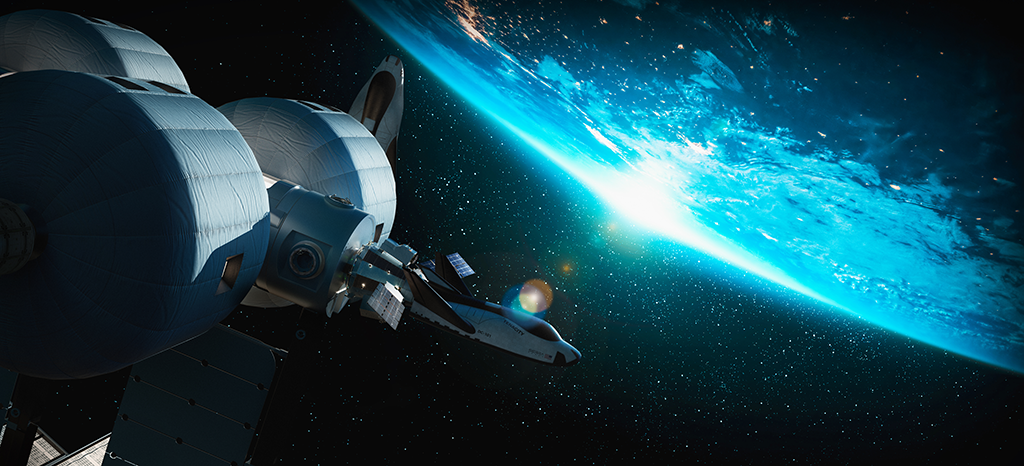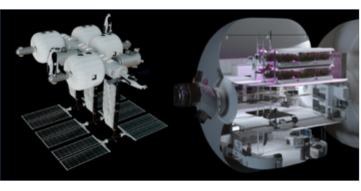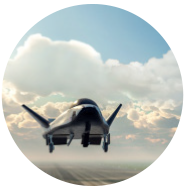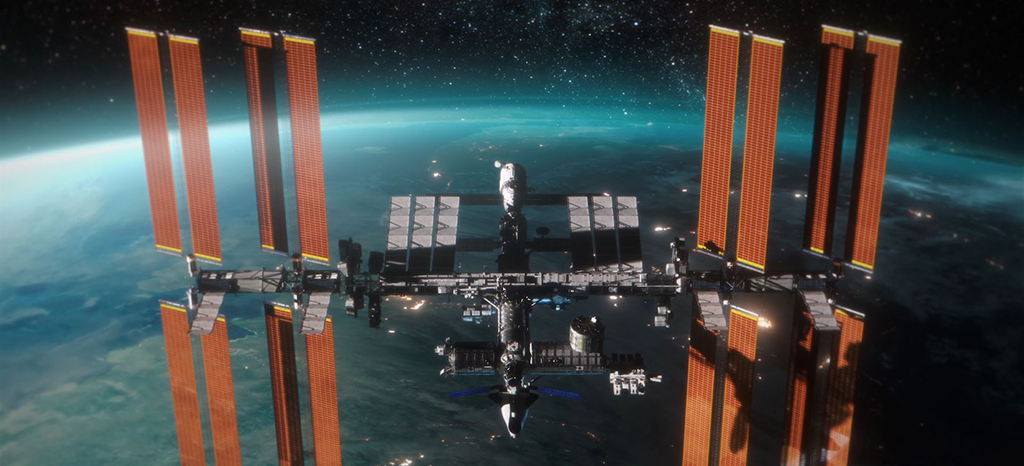The Next Industrial Revolution Is Underway— 250 Miles Up
This article was originally published in the February 2024 issue of Jetstream.
We are on the doorstep of the most profound industrial revolution in human history. The world is entering a new era of unprecedented economic activity marked by the transition from 60 years of space exploration to a future in which we extend our cities, communities, and factories into space.

Humanity’s next chapter will be defined by unlocking the next great discoveries using new, commercial, on-orbit infrastructure just 250 miles above the Earth’s surface to harness the incredible potential of microgravity. One leading commercial space company, Sierra Space, has plans to build and operate microgravity “factories of the future” in low Earth orbit (LEO) to harness the unlimited potential of space to disrupt terrestrial industries and benefit life on Earth.
The Massive Potential of Microgravity
Microgravity holds the power to unlock massive potential. The fundamental gravitational forces experienced here on Earth, such as buoyancy, convection, and sedimentation, can be controlled in microgravity, enabling new breakthroughs in industries such as biotechnology and pharmaceuticals, advanced materials, health and wellness, avionics, education and more.
The near-weightless environment in LEO can help us find solutions to dramatically enhance the quality of human life and increase our longevity by years if not decades. It can greatly accelerate our ability to cure many diseases, combat the unpleasantries of aging and exponentially increase knowledge of the human body’s diseases and aging mechanisms.
The International Space Station (ISS) changed our planet through a myriad of scientific advancements.
Fundamental disease research in microgravity is helping experts better understand Alzheimer’s, asthma, heart disease and cancer. Researchers have invented new water purification systems, learned how to grow food, and made discoveries about muscle atrophy and bone loss. Since 2013, nearly all on-orbit R&D has utilized the ISS U.S. National Laboratory (ISSNL), where research and experiments involving tissue chips (engineered microsystems that represent units of human organs) and crystal growth has produced medically relevant results.
Economic returns from research and manufacturing in LEO in the biotech and pharmaceutical industries can be profound. Consider that approximately 10 million people die from cancer each year. Despite advances, there are no cures and no preventative strategies. It is estimated that a 1% reduction in mortality from cancer has a value of nearly $500 billion. Further, a cure for cancer would be worth about $50 trillion.
Building A Turn-Key In-Space Biotech Contract Research Organization

- Commercial platform for product innovation
- Catalyst for the next scientific breakthroughs
- Cell cultures for predicting disease models
- Organic production from adult stem cells
- Direct drug research: Oncology and Longevity

- Runway capable landing
- Low G re-entry
- Instant access to precious cargo

- Seamless integration with terrestrial biotech ecosystem
- Reduces product development timelines
Moving Boldly to Leverage LEO
Sierra Space is a leading commercial space company that is well-positioned to capture a meaningful leadership role in this burgeoning market.
Providing seamless access to a microgravity environment—which increases returns from innovation, improves the success rate for compounds in development and cuts development timelines—is a compelling value proposition.
The company is a first mover in this space, building both the transportation systems and on-orbit infrastructure to sustain humans living and working in microgravity for extended periods—enough time to make meaningful progress on the next products and innovations that will improve life on this planet.
NASA selected Sierra Space’s Dream Chaser® spaceplane under a multi-mission contract to provide cargo delivery, return and disposal services for the ISS.
The first Dream Chaser vehicle, Tenacity, will begin operating cargo missions to and from the station starting in 2024. Dream Chaser is a game-changer for transporting critical microgravity experiments back to Earth because it returns from space on a runway like NASA’s retired Space Shuttle.
A gentle 1.5G landing preserves sensitive science, and because the spaceplane operates on non-toxic fuels, cargo can be offloaded in 20 minutes. A crewed variant of Dream Chaser is also in development alongside human spaceflight and astronaut training programs to extend capabilities later this decade.
Meanwhile, “remote work” will never be the same as Sierra Space continues to make great progress on commercial space station platforms for human habitation and scientific research.
Engineering teams at Sierra Space and NASA have stress-tested subscale versions of the company’s inflatable space station technology, LIFE™ habitat, which launches on a conventional rocket and inflates on orbit to a structure three stories tall and 27 feet in diameter.
The inner pressure shell layer is composed of woven Vectran fabric that is stronger than steel upon inflation and tough enough to withstand the internal pressure required for the crew to live and work comfortably for extended periods in space conducting critical R&D and manufacturing. With its inflatable technology, Sierra Space offers one-third of the pressurized volume of the entire ISS in just a single rocket launch.

Looking Ahead (and Up) to Exciting Innovations
The ability to conduct research and manufacturing in microgravity is a step-change in the evolution of medicine, wellness, advanced materials, education, agriculture, and various other industries.
As companies begin to adapt and implement it, understanding the potential to deliver value to the economy and society at large will help shape critical decisions.
The source of humanity’s next breakthrough foundational technology may, in fact, be just 250 miles away—right above our heads.
All images and renders owned by Sierra Space Corporation.






